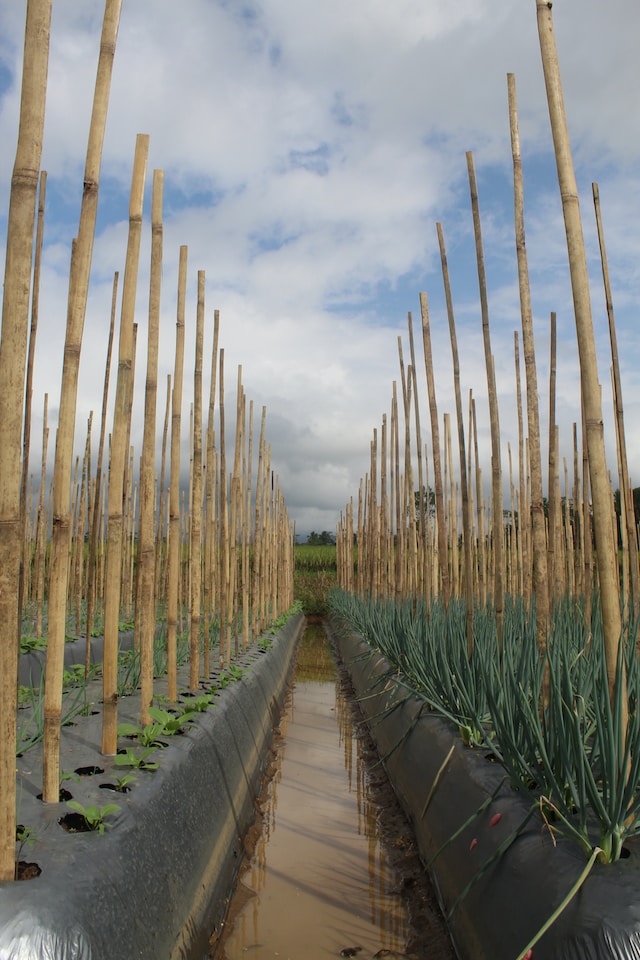Bamboo Production
Bamboo production is emerging as a promising solution to mitigate climate change, offering carbon sequestration, soil health improvement, and sustainable alternatives to traditional materials.

View open jobs in this Solution
Example Companies
- EcoPlanet Bamboo - Develops large-scale bamboo plantations for sustainable timber production
- Bamboo Village Hawaii - Promotes bamboo cultivation and sustainable living practices
- Moso International - Specializes in bamboo products for construction and interior design
- Bamboo Textile Company - Produces eco-friendly textiles from bamboo fibers
- BamCore - Develops innovative bamboo-based building materials
Overview
Bamboo production has shown significant potential in reversing climate change due to its rapid growth, high carbon sequestration capacity, and versatility as a sustainable material. Recent technological advancements have improved the efficiency of bamboo cultivation, processing, and product development, contributing to reduced greenhouse gas emissions and improved environmental outcomes.
Progress Made
-
Carbon Sequestration: Bamboo forests can sequester up to 12 tons of carbon dioxide per hectare per year, outperforming many tree species.
-
Sustainable Materials: Bamboo is increasingly used as an alternative to wood, plastic, and other carbon-intensive materials in construction, textiles, and consumer goods.
-
Soil Health: Bamboo cultivation improves soil structure, reduces erosion, and enhances water retention.
-
Technological Advancements: Innovations in bamboo processing have led to more efficient production of bamboo charcoal, pulp, and engineered bamboo products.
Solutions by Sector
Agriculture
- Intercropping bamboo with other crops for soil improvement
- Using bamboo for erosion control and land restoration
Case Studies:
- EcoPlanet Bamboo's Nicaragua Project: Restored degraded pastureland using bamboo, creating a sustainable timber source and enhancing biodiversity.
- International Bamboo and Rattan Organisation (INBAR) in Ethiopia: Implemented bamboo-based land restoration projects, improving soil health and providing income for local communities.
- Bamboo Capital Partners in Latin America: Invested in bamboo plantations for sustainable agriculture and carbon credits.
Manufacturing
- Developing bamboo-based alternatives to plastic and wood products
- Improving bamboo fiber processing for textiles
Case Studies:
- BamCore's Prime Wall System: Created a bamboo-based alternative to traditional wood framing, reducing carbon footprint in construction.
- Bamboo Textile Company's Eco-Friendly Fabrics: Developed innovative processes to create soft, durable textiles from bamboo fibers.
- Moso International's Bamboo X-treme Decking: Engineered highly durable outdoor bamboo products as alternatives to tropical hardwoods.
Energy
- Producing bamboo charcoal as a sustainable fuel source
- Developing bamboo-based bioenergy systems
Case Studies:
- INBAR's Bamboo as Sustainable Biomass Energy Project: Implemented in Ethiopia, Ghana, and Madagascar to promote bamboo charcoal as an alternative to wood fuel.
- Bamboo Bioenergy Project in Indonesia: Explored the potential of bamboo for bioenergy production in rural communities.
- Africa Bamboo's Charcoal Production: Developed efficient bamboo charcoal production methods in Ethiopia, providing a sustainable alternative to wood charcoal.
Lessons Learned
- Sustainable management is crucial for long-term effectiveness of bamboo production.
- Bamboo can create economic opportunities throughout its value chain.
- Education and awareness are essential for promoting bamboo as a climate solution.
- Integration with existing agricultural systems can enhance adoption and impact.
Challenges Ahead
- Limited awareness of bamboo's potential as a climate change solution
- Need for more research and development in bamboo processing technologies
- Lack of standardized practices for sustainable bamboo cultivation
- Competition with established industries and materials
Best Path Forward
- Increase investment in research and development for bamboo technologies
- Develop and implement policies to support sustainable bamboo production
- Expand public awareness campaigns about bamboo's environmental benefits
- Foster collaborations between bamboo producers, researchers, and industries
- Establish certification systems for sustainably produced bamboo products